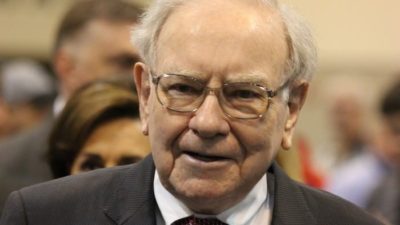This article was originally published on Fool.com. All figures quoted in US dollars unless otherwise stated.
Tech giants are dumping mountains of cash into artificial intelligence (AI) data centers. Microsoft plans to spend $80 billion this year to expand its AI capacity. Amazon is boosting its total capital spending, spread across its retail and cloud businesses, to $100 billion to accelerate its AI efforts. And Meta Platforms will pour $65 billion into its data centers to fuel its AI ambitions.
On the surface, this all sounds great for Nvidia (NASDAQ: NVDA) stock. The company dominates the market for powerful AI accelerators, and second place AMD has already put forth a disappointing forecast for its own AI chips sales this year. Nvidia is going to scoop up the lion's share of the spending that goes toward AI accelerators.
Trees don't grow to the sky
Forecasts for AI accelerator sales paint a rosy picture for Nvidia. AMD, for example, once predicted that AI accelerators would generate $500 billion in industrywide revenue in 2028.
However, investors need to ask an important follow-up question: How can that spending possibly be justified?
If companies are going to spend half-a-trillion dollars a year on AI accelerators, not to mention many billions more on other data center gear, those investments will need to pay off in the form of new sources of revenue or cost savings.
Is that realistic? What will generate that new revenue?
Nvidia's valuation is built on optimism — namely, optimism that its revenue and profit can continue to grow at blistering rates for years. The stock currently trades for more than 40 times expected earnings for fiscal 2025.
This is a company that's already worth more than $3 trillion and generated $20 billion in adjusted net income last quarter. The market for AI accelerators must continue to grow rapidly for Nvidia's stock price to make any sense.
It's not that investors are discounting the possibility that demand for AI accelerators flatlines — it's that investors are discounting the possibility that demand collapses. What will happen to Nvidia stock if, after Microsoft, Amazon, and Meta hurl hundreds of billions of dollars into AI data centers, those companies fail to generate a reasonable return on investment?
The AI investment boom feels like a massive case of FOMO (fear of missing out). Tech giants are terrified of being left behind, so they're throwing caution to the wind.
There's genuinely an enormous amount of demand for AI computing capacity right now, but how much of that is experimentation? In other words, how much of that is companies trying out AI to see if it makes financial sense? When some of those experiments don't pan out, what will happen to demand?
Then there's DeepSeek, the Chinese company that trained an AI model that can compete with the best AI models U.S. companies have to offer for a fraction of the price. If training top-tier AI models no longer requires megaclusters of AI accelerators, what will happen to demand?
This might be peak Nvidia
I'm calling it: Peak Nvidia is almost here, and it's close to the point where the stories and predictions keeping the AI boom afloat start to fall apart. It's not that AI isn't an impressive and useful technology. Like the internet, it's revolutionary.
But also like the internet 25 years ago, it's creating expectations that appear untethered from reality. The internet changed the world but also ruined plenty of investors along the way.
I could be very wrong about this. It's certainly possible that the hundreds of billions of dollars being spent on AI infrastructure will make financial sense in the end and demand for AI accelerators will continue to grow far into the future. Maybe Nvidia will put out a stellar forecast that drives the stock to new highs. Anything is possible.
Still, I don't think I'd want to be an Nvidia shareholder on February 26 when the company reports its latest results. Expectations are sky high, and any hint of trouble could send the stock plunging.
This article was originally published on Fool.com. All figures quoted in US dollars unless otherwise stated.








